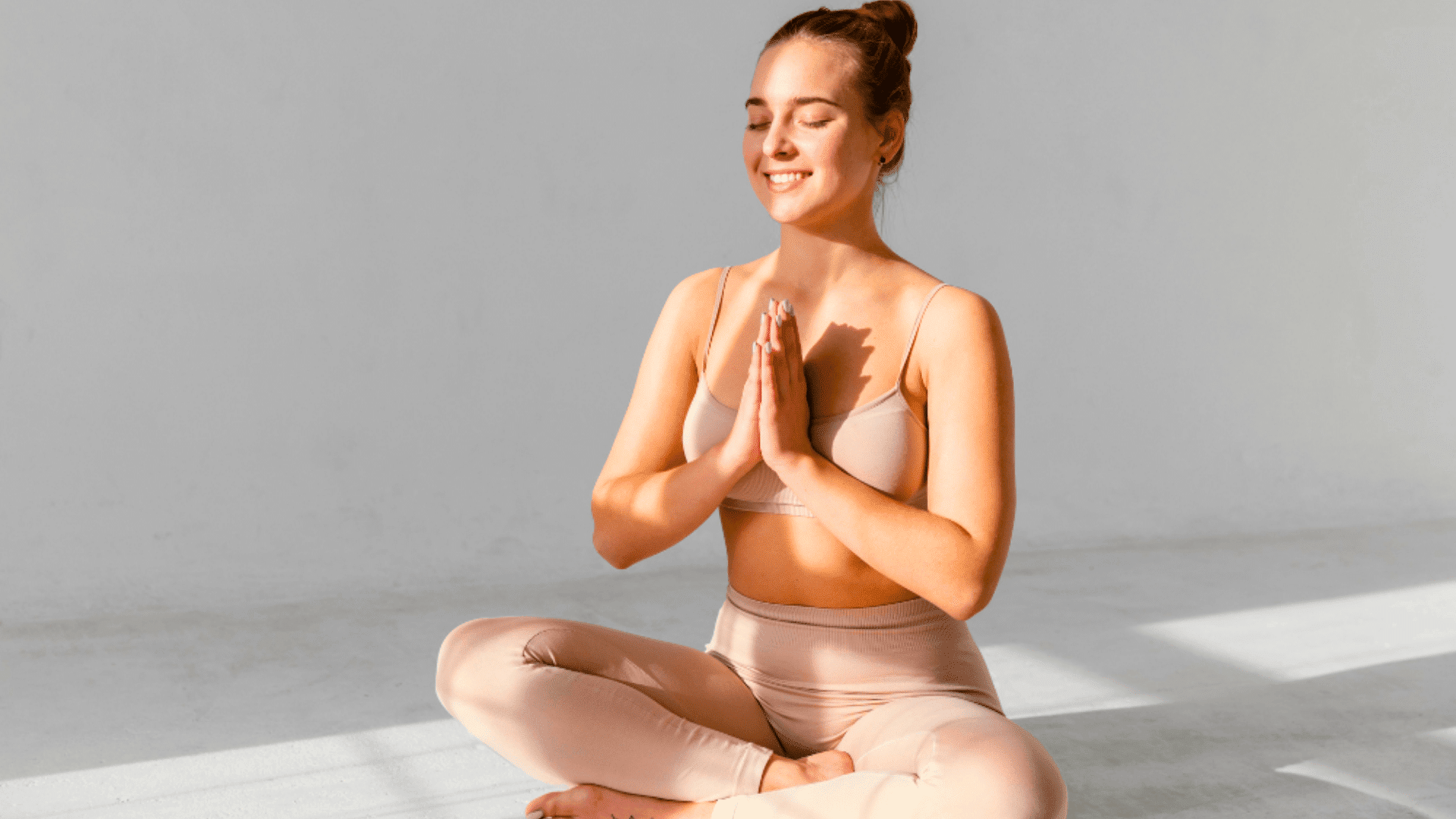Trying to get pregnant can feel like a rollercoaster of emotions. Some days you’re hopeful, and other days the stress weighs you down. I can see how draining that can be, and it’s easy to feel like your body isn’t cooperating.
That’s where yoga for fertility comes in. It’s not a magic fix, but it can give you a sense of calm and help your body feel more open and supported. Through gentle poses and simple routines, you can ease stress, improve circulation, and create a better environment for conception.
In this blog, I’ll walk you through helpful poses, easy routines, and practical ways to bring more balance into your fertility journey.
Yoga for Fertility: What It Means
“Yoga for fertility” isn’t a separate style of yoga but a selection of poses chosen to ease stress, regulate energy, and gently stimulate the pelvic region. It’s often used as a complement to medical care or assisted reproductive treatments.
Yoga helps reduce anxiety, improve mood, and encourage relaxation. What it does not do is “cure” infertility or replace medical guidance. Think of it as a whole-body support system that helps you cope and prepares your body to receive care. Always check with your doctor before starting a new practice, especially during treatment cycles.
Yoga for Fertility: Poses and Simple Instructions
Certain poses are especially helpful when your goal is to support fertility. These movements focus on calming your nervous system, improving blood flow, and opening the hips and pelvic area. Below, I’ve outlined simple how-tos for each pose so you can try them at home with confidence.
1. Legs Up the Wall (Viparita Karani)
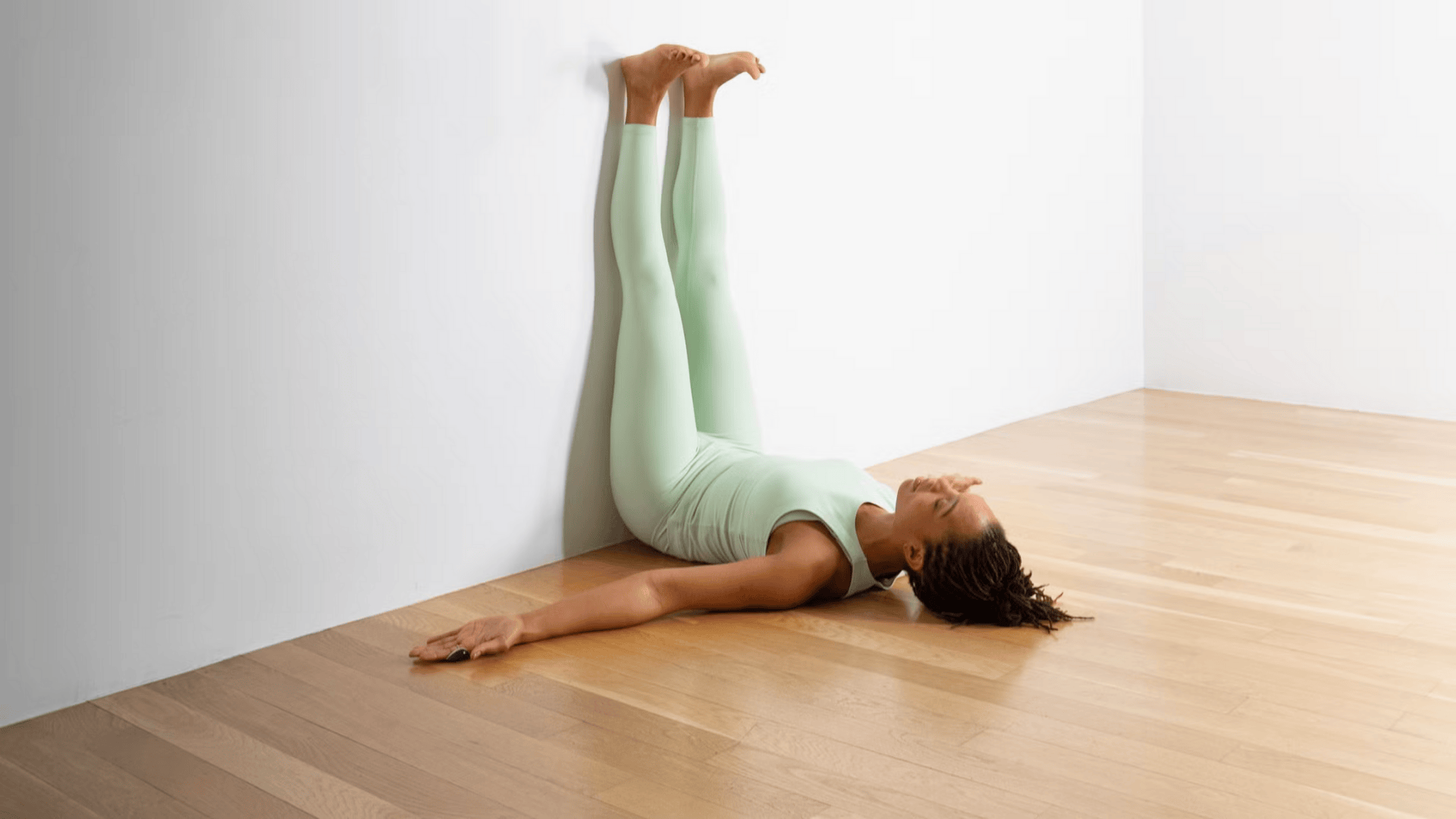
Sit close to a wall, lie back, and extend your legs upward. Rest for 5–10 minutes while breathing slowly. This gentle inversion calms your nervous system, reduces tension, and supports circulation to the pelvic region, creating a more relaxed environment for your body during conception efforts.
2. Reclining Bound Angle (Supta Baddha Konasana)
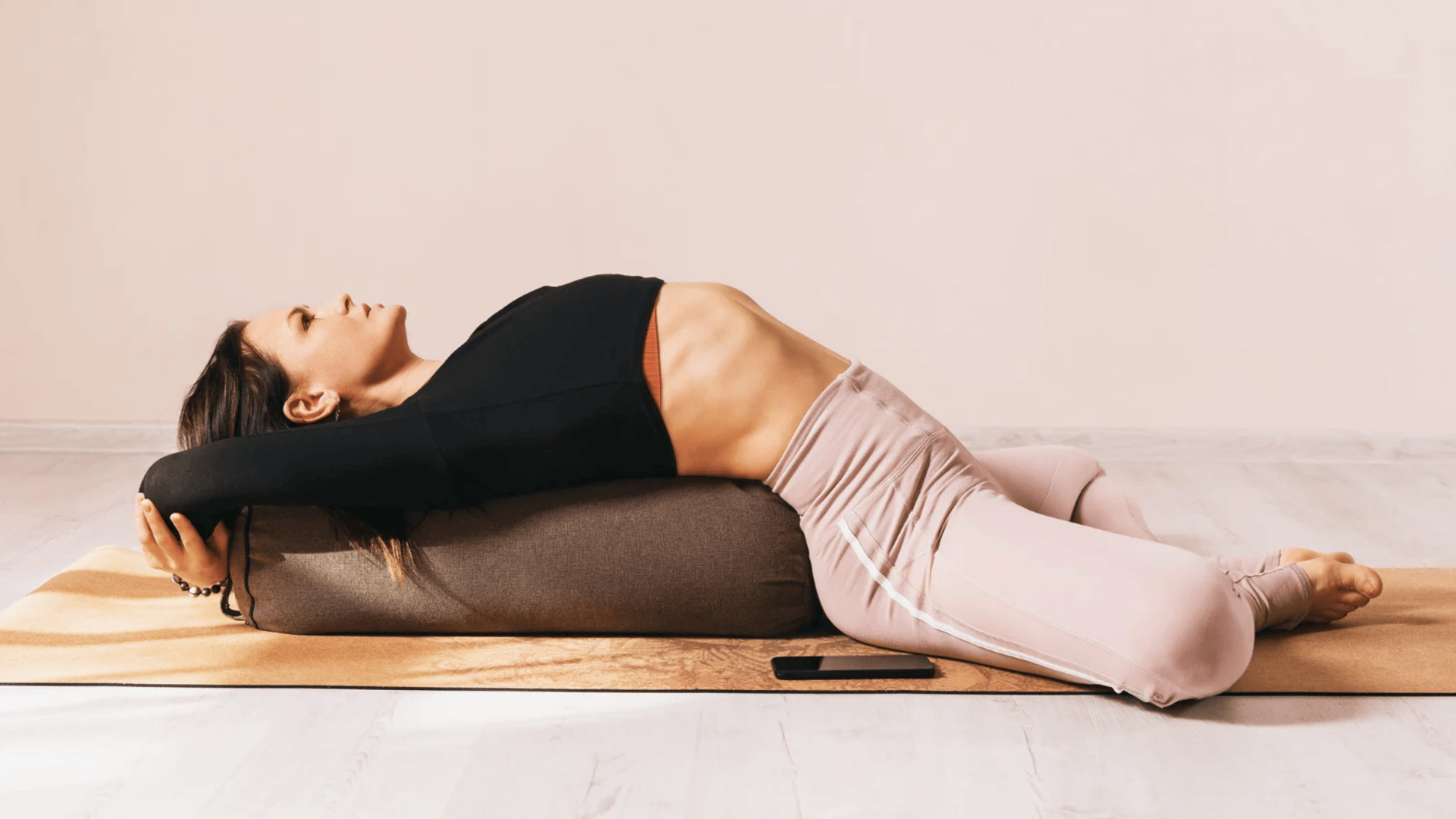
Lie on your back, place the soles of your feet together, and allow your knees to drop open. Rest your hands on your belly as you breathe. This restorative pose releases tension in the hips and inner thighs while promoting relaxation and energy flow to your reproductive organs.
3. Bridge Pose (Setu Bandha Sarvangasana)

Lie flat with knees bent and feet grounded. Press into your feet, lift your hips, and hold for several breaths before lowering slowly. The bridge strengthens the back and pelvic floor while improving circulation. It’s also thought to gently stimulate thyroid function, which can influence overall hormonal balance.
4. Cat–Cow (Marjaryasana/Bitilasana)
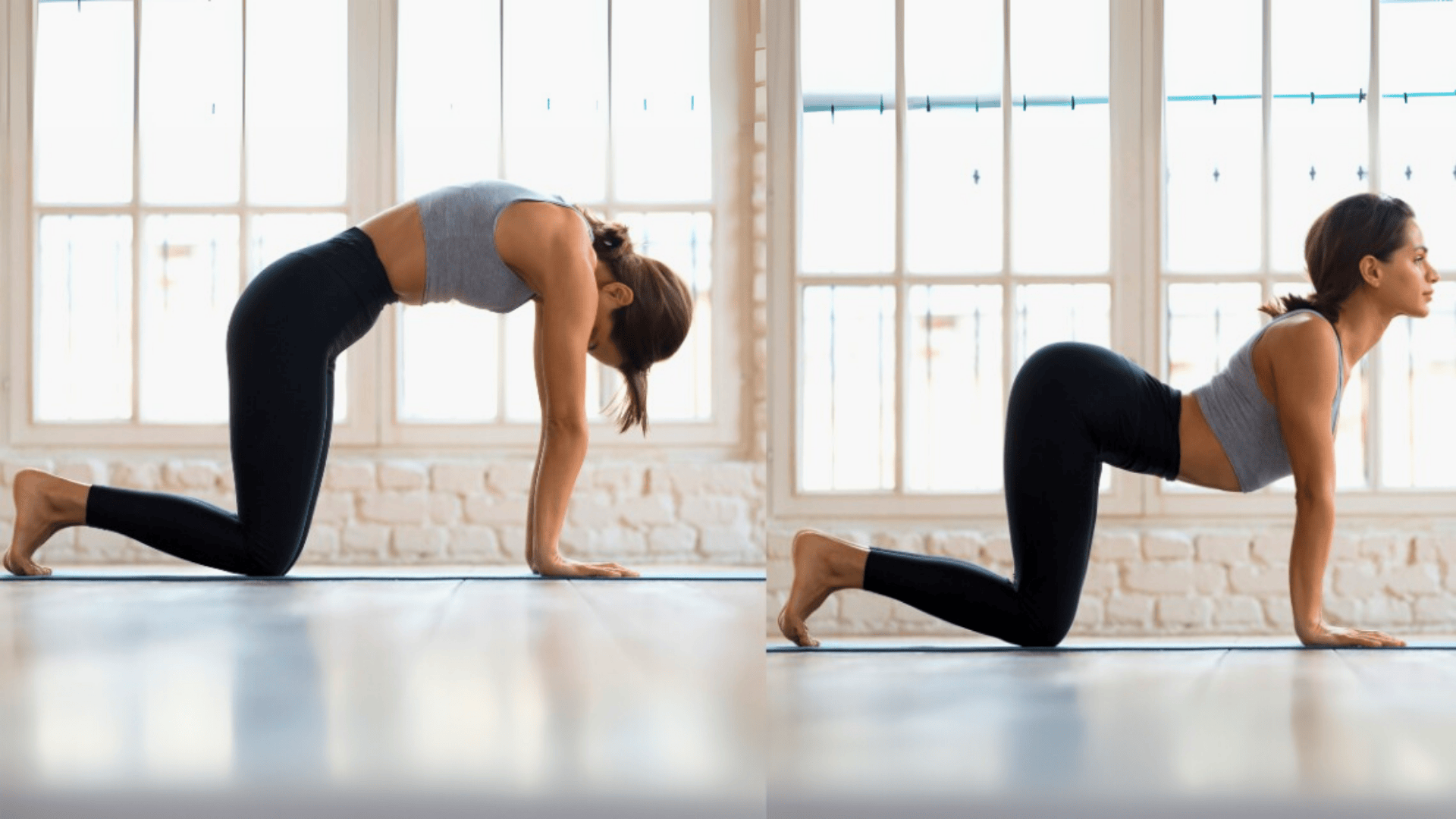
Start on hands and knees. Inhale to arch your back and lift your chest (cow). Exhale to round your spine and tuck your chin (cat). Repeat 10–15 times. This flowing sequence increases spinal mobility, relieves back tension, and helps sync breath with movement for calming stress relief.
5. Cobra Pose (Bhujangasana)
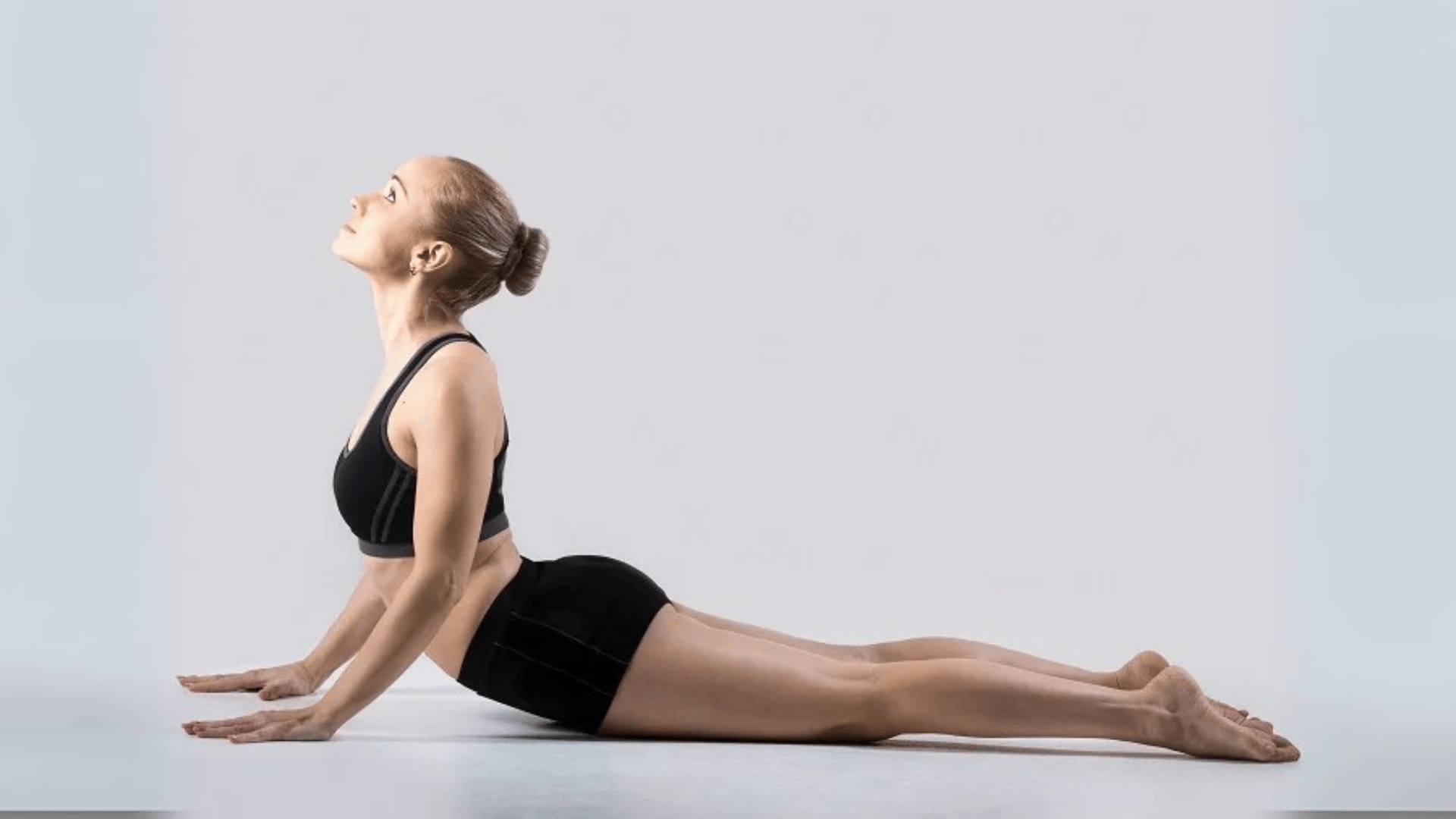
Lie face down with legs extended, hands beneath shoulders. Inhale, pressing lightly to lift your chest without strain. Cobra strengthens the spine, opens the chest, and boosts blood flow to the pelvic region. Skip this pose if pregnancy is suspected, but it can be valuable earlier in your cycle.
6. Garland Pose (Malasana)

From standing, squat with heels grounded or supported on a rolled towel. Bring palms together at the chest and press elbows gently against inner knees. Garland opens the hips, stretches the lower back, and encourages pelvic flexibility. It’s especially useful for releasing tension stored in the hip joints.
7. Extended Triangle (Utthita Trikonasana)

Step wide, turn front toes forward, and angle the back foot slightly. Extend your torso forward and lower one hand to your shin or floor, reaching the other arm upward. Triangle stretches the hips, legs, and side body while supporting circulation and alignment in the pelvic region.
8. Frog Pose (Mandukasana)
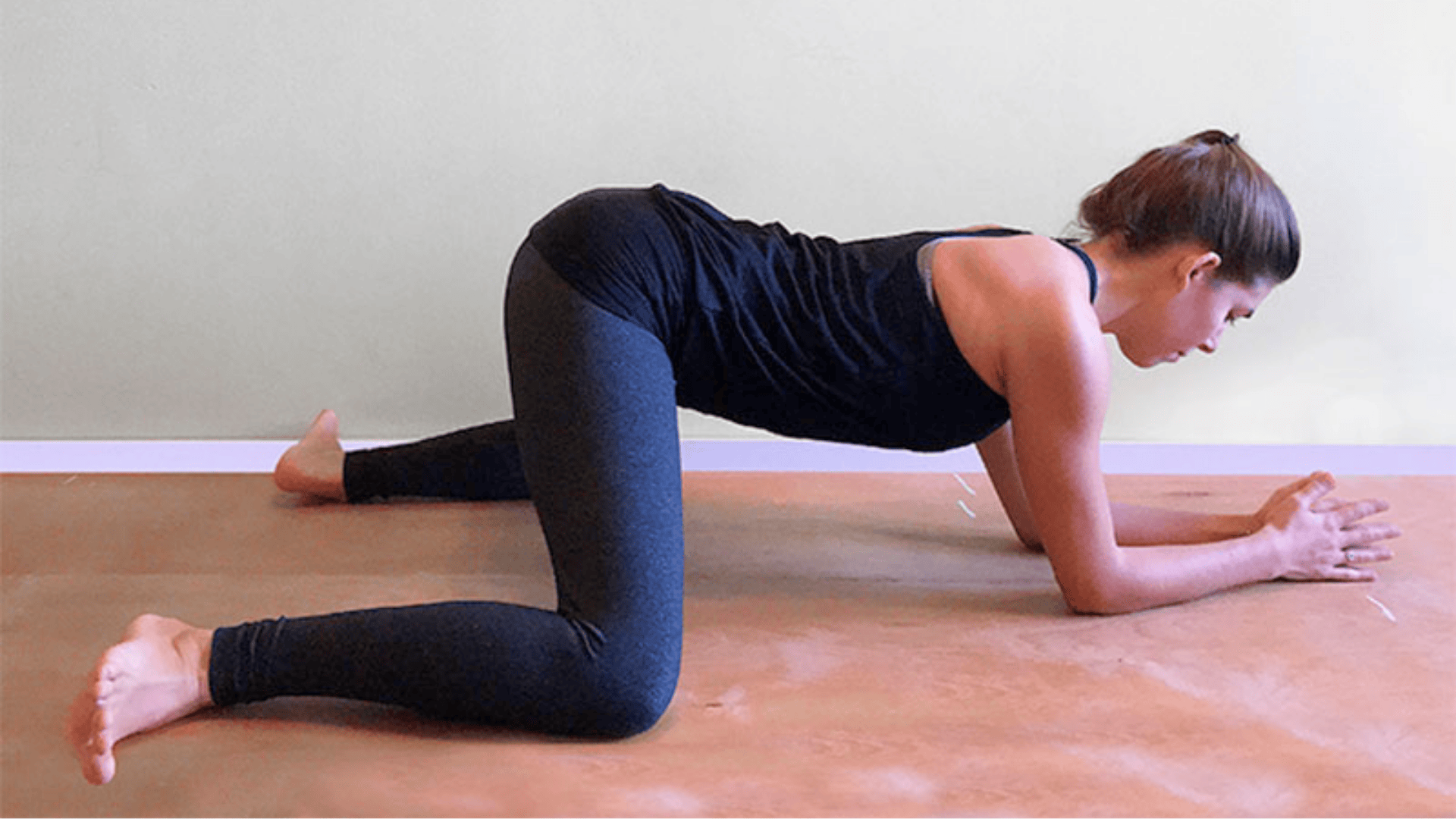
Begin on all fours and slowly slide your knees apart, keeping shins angled outward. Lower onto your forearms and breathe deeply. Use pillows under the hips if needed. Frog is a strong hip opener that stimulates blood flow to reproductive organs and relieves tension in the inner thighs.
Easy Yoga for Fertility Routines You Can Start Today
Sometimes it’s easier to follow a short sequence than to focus on single poses. Simple routines can help you stay consistent without feeling overwhelmed. Each of these flows is designed to match different times of day or moods, so you can choose what feels right for you.
10-Minute Morning Reset
Waking just a few minutes in the morning to focus on gentle movement and breath can support your body and mind. Here’s a simple 10-minute morning reset with yoga you can try:
- Slow breathing (1 minute)
- Cat–Cow x 12
- Low lunge (each side)
- Triangle (each side)
- Legs Up the Wall, 3–5 minutes
Ovulation-To-Implantation (Soft Flow)
During the days from ovulation to implantation, gentle movement can help reduce stress, improve blood flow, and support calmness in the body. Try this soft flow sequence designed to keep your body relaxed and balanced:
- Reclining Bound Angle, 2–3 minutes
- Forward fold, 5 breaths
- Bridge, 3 rounds
- Side-lying rest
- Gentle body scan, 2 minutes
15-Minute Bedtime Wind-Down
Ending your day with slow, mindful movement can ease stress and prepare your body for rest. Here’s a simple 15-minute bedtime wind-down you can try:
- Child’s Pose, 1–2 minutes
- Cat–Cow x 10
- Supported butterfly stretch
- Legs Up the Wall, 5–10 minutes
- Side-lying breath before sleep
Weekly plan: Start with 3 sessions a week. Over time, aim for 4–5 shorter practices that match your schedule.
Cycle-Aware Practice (Natural Cycles and Art)
Your body moves through different phases each month, and matching your yoga practice to these changes can make it more supportive. By choosing the right poses for each stage, you give yourself the best balance of rest, strength, and openness.
Here’s a simple guide you can follow:
| Cycle Phase | Suggested Practice |
|---|---|
| Menstruation | Restorative poses such as Legs Up the Wall or Child’s Pose to ease discomfort. |
| Follicular Phase | Light strengthening with Bridge and gentle standing poses to build steady energy. |
| Ovulation | Hip openers like Garland and Triangle to support circulation and pelvic openness. |
| Luteal Phase / 2WW | Calming restorative postures with breathwork to reduce stress and promote ease. |
| Assisted Cycles (IUI, IVF, FET) | Gentle modifications and more rest days, guided by advice from your medical team. |
Adapting your practice this way helps you stay connected to your body while respecting its natural rhythm. It also allows you to safely adjust during treatment cycles without adding extra strain.
When to Stop or Modify Poses
Listening to your body is the most important part of practicing yoga for fertility. If a pose causes pain, pressure, or dizziness, step out right away and return to a neutral position like Child’s Pose or lying flat on your back.
During fertility treatments or the two-week wait, keep your movements gentle and restorative, focusing more on breathing than on intensity.
In early pregnancy, it’s best to avoid deep backbends, compressions, or strong twists unless your doctor has given you the green light. Use props such as bolsters, pillows, or folded blankets whenever needed to make poses more comfortable. Remember, the goal is to support your body, not to push it past its limits.
Wrapping Up
When I think about yoga for fertility, I see it as a way for you to give yourself a break. It’s not about perfect poses; it’s about those quiet minutes that let your body relax and your mind slow down. Even short practices can ease your stress, support circulation, and help you feel more in tune with yourself.
I’ve shared poses, routines, and ideas that you can adapt to your own cycle or treatment plan. My hope is that you try them at your own pace and notice the small shifts over time.
If you’d like more support, I invite you to read my other posts. You may find something that speaks directly to your needs!

